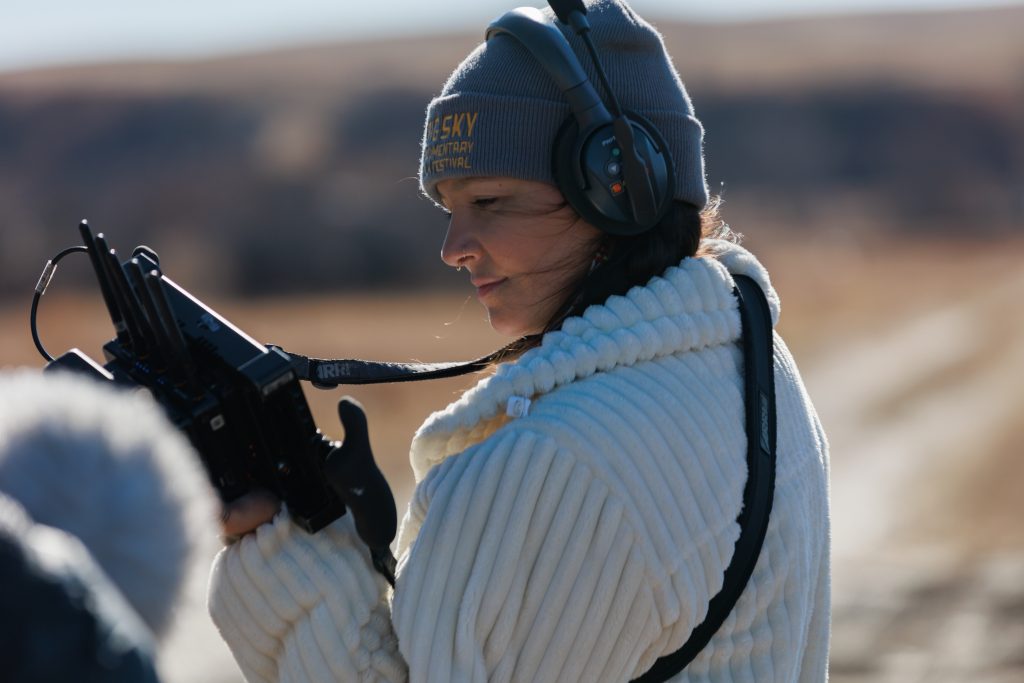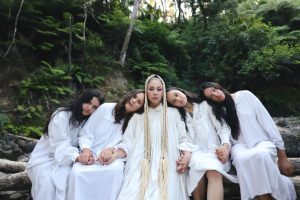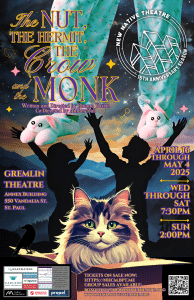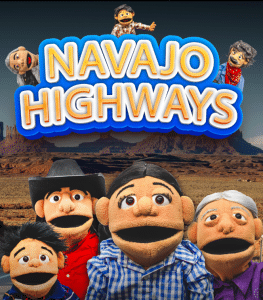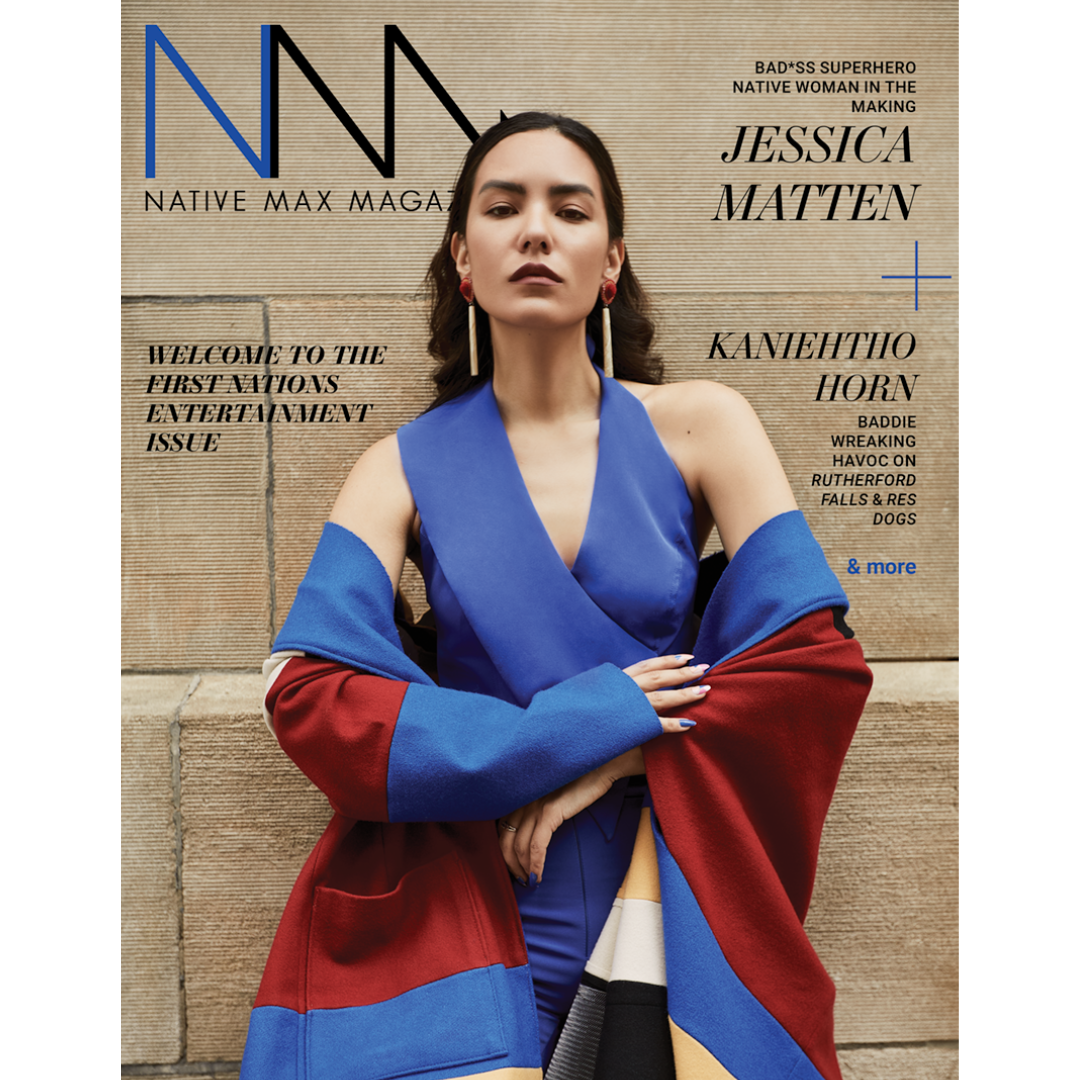Select a subscription plans
You need a subscription to access this content.
Loren Waters is a force quietly—and powerfully—reshaping Native storytelling on screen. A filmmaker based in Tulsa, Oklahoma, Waters draws from her Cherokee and Kiowa heritage to craft narratives that honor Indigenous experiences, spark emotion, and promote healing. Whether she’s behind the camera directing her award-winning documentary Tiger, working on major productions like Reservation Dogs, or mentoring fellow Native creatives, Waters is deeply intentional about how stories are told—and by whom. Her work exists at the intersection of film, environmental justice, and community, and it’s through that lens that she continues to uplift, inspire, and imagine what Native cinema can be.
Would you mind introducing yourself and your background to our audience to start?
I am a filmmaker. I live in Tulsa, Oklahoma, on the Muscogee Creek Nation Reservation. I am a Cherokee Nation and Kiowa tribal citizen. I grew up in Norman, which is about two hours away from here in Oklahoma. I love living here, and I’m so grateful that I can continue to work in Tulsa in the film industry. It’s an honor.
You’ve worked on some of the most influential Native led projects of our time, including Reservation Dogs and Killers of the Flower Moon. How have these experiences shaped your vision as a filmmaker?
These projects came to me without me asking for them, I should say. But I think everything always happens for a reason. And I think Reservation Dogs especially has had such a strong impact on me as a filmmaker because of the way that the creator, Sterling Harjo, leads his sets and puts his community at the forefront of his decision-making. And it has inspired me to contribute to the community-building efforts that are happening here in Tulsa. It just opened my eyes to what’s possible for us Native people. The first time it was ever done, I was able to experience it: an all-Indigenous writers room, a Native crew that was moving up in positions every season. It was just a special time. I think there will be a before and an after Reservation Dogs came out, and that’s definitely how it is in my life, and for many people who have worked on the show.
That this is just the beginning, there are many more to come with Killers of the Flower Moon. My experience was a lot different because the creators were non-Native and the budgets were so much bigger. Still, I was able to work on set and experience what it was like to work on a $200 million-plus film, which is like the biggest, that’s as big as it gets, really, in the industry. Being part of that and seeing how big it can get was inspiring to me.
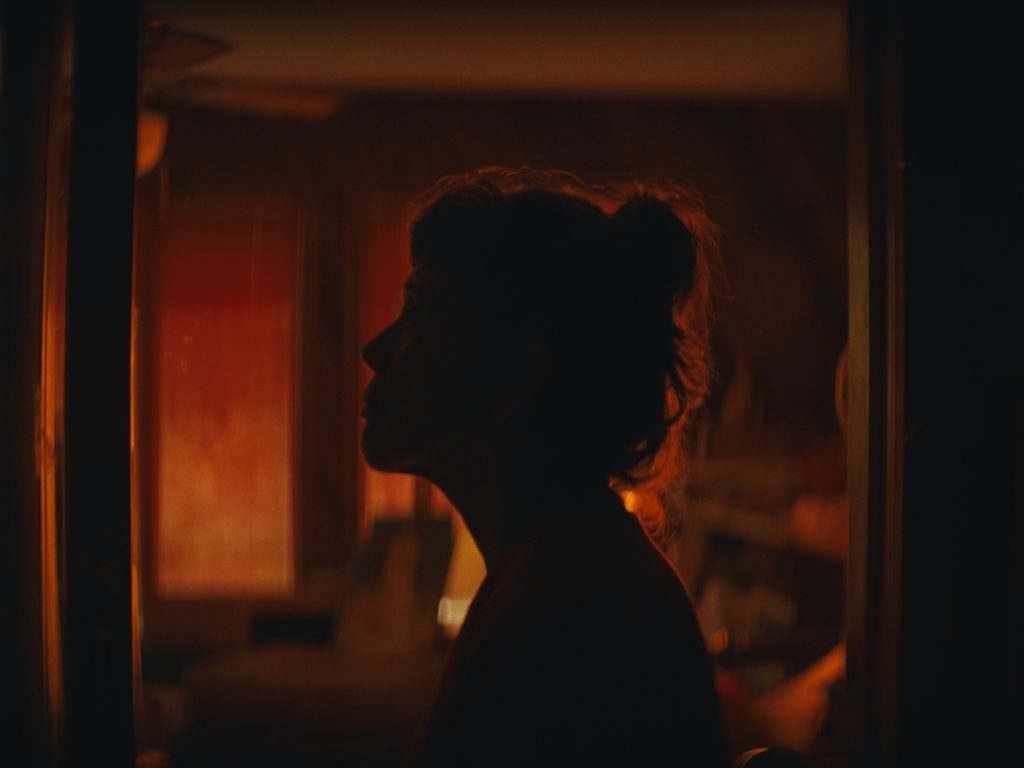
Your storytelling spans documentary and narrative film. What draws you to a story, and how do you decide which format best brings it to life?
I, up to this point, have mainly worked on documentary films, and I think, well, I see myself moving into writing narrative and directing narrative is in my next phase of storytelling, or for my next phase of storytelling, and that’s the plan.
I wrote a short fiction film that’ll be filmed later this year. What draws me to a story is that I like stories that make me feel something that I think I’m drawn to grief; drawn to inspiration, to hope, and how we can experience these feelings that are on the very different sides of the spectrum to overcome the challenges in our lives and be able to move forward. How do I decide which format? I think it’s pretty, and it can be simple. I believe that real life can inform narrative films, and that’s what inspires my next short film, which is based on real-life events. But adding things that aren’t real in that too, to be able to, you know, make it just a little bit different than what you would expect.
Documentary has been a form that has been traditionally exploitative to Indigenous communities. It’s challenging to operate in a space where many non-Natives are telling Native stories or creating projects, and they think they know what our communities want to see. But I think the most interesting films that have Native stories to me tend to come from the minds of Indigenous people themselves, because we’re not seeing the traditional stories of stereotypes that you would usually see.
Tiger earned a special jury award at Sundance this year. Congratulations! Can you tell us about the inspiration behind the film and what that recognition meant for you?
I was so shocked when I received this award. For many independent filmmakers, screening their work at Sundance is often the top goal.
While I don’t think we should place our value on the festivals we get into, it is still a dream come true to screen at this festival and have our story shared on such a big platform. We had the best time. Dana and her whole family got to come. My family, my partner, Robert Hunter, who’s our cinematographer and executive producer, brought his family too. So it was just a big celebration. This film tells the story of Dana Tiger, a Muskogee Creek elder and artist in our community, who comes from a family of artists. Her family basically had a thriving t-shirt screen printing business in the eighties, built on the art of Dana’s dad and uncle. And her brother Chris was the head silk screener at the time when they were selling t-shirts all over the world.
He was murdered. And that was in 1990, and everything came to a stop for the Tiger family. This was a really devastating time. They are bringing the shirts back, which is the hope I love. I saw the inspiration that I was drawn to whenever I went to film with Dana for the first time, it was the first day that they were screen printing t-shirts again since 1990, and that was in 2023, 30 years later. We built the story backwards from there after we went to the gallery and had that filming day.
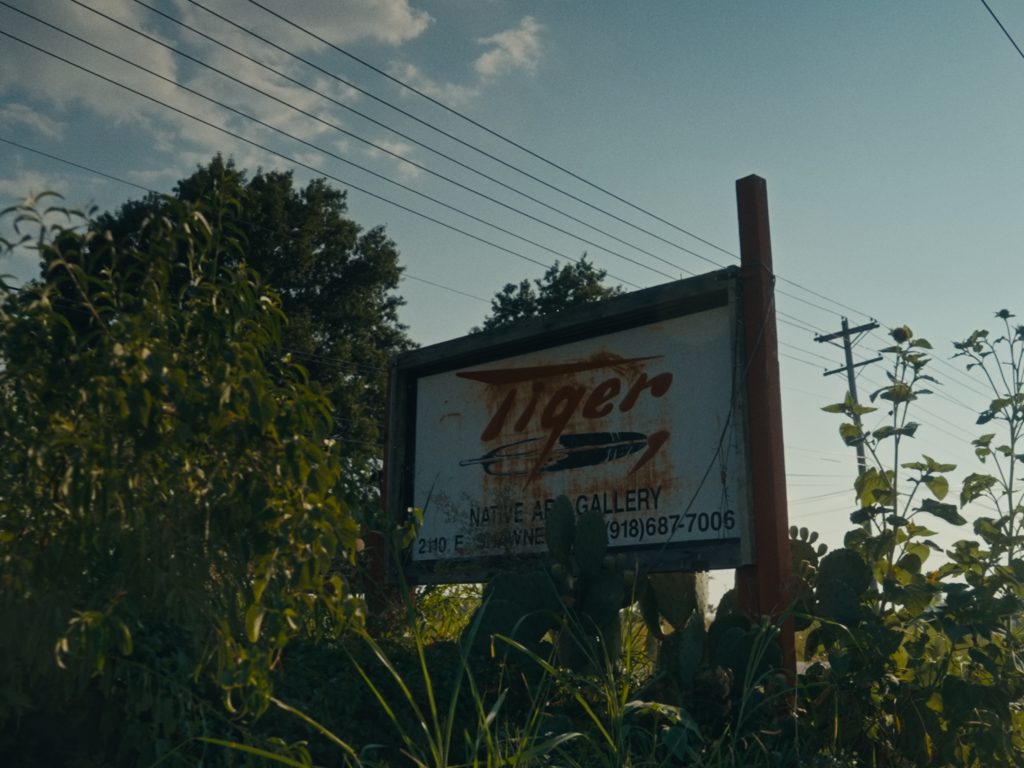
Your work centers on cross-cultural Indigenous experiences. How do your Cherokee and Kiowa identities inform your approach to filmmaking and community engagement?
Growing up in Oklahoma has been such a special experience, and I wouldn’t have it any other way. This is such a strong place of so many tribes and so many Indigenous people, and really, it’s ground zero for inspiration, storytelling, and culture.
I was always taught to put our culture and our people at the forefront of what we do. Whenever I tell stories, I always consider the impact on not only the people in the film, which is crucial, but also our community at large. How can this film serve as a tool to create change, have a positive impact, and evoke feelings in people, ultimately inspiring them? I want people to feel good when they leave the theater.
I think that being Cherokee and Kiowa growing up in Oklahoma, having such a strong support system and then moving to Tulsa and building an incredible filmmaking community here with a lot of Indigenous people in the industry, just gave me all the tools that I needed to create this film and do it in a way that helps Dana Tiger and her family and also can inspire other filmmakers and other people to, to tell their own stories.
It’s embedded in who we are to give back. When you’re inherently thinking about how to do that within your own art and your project, even before you ever get into the editing room or pick up a camera, I think that that’s essential. That’s what’s missing from many non-Native people in this industry. I would say that’s a special part of what we do.
How do you navigate the responsibility of representing Native stories, especially when working with mainstream productions or non-Native teams?
It can be difficult. I’ve directed projects with a whole non-Native team, and there’s a lot of explaining. It takes a lot of energy, and it can be frustrating. Then there are times when I feel like, with Tiger, for example, this story is so culturally rich, but it’s also non-specific in identity. That’s why I think it resonates so widely with audiences, because it’s about a human experience. This film has allowed me to connect with mainstream audiences, productions, and non-Native teams because it bridges that gap of seeing each other through these similar human experiences, like grief. You don’t have to explain the cultural aspects of things, although they are the backdrop of the story. I don’t think my work represents all Native stories and people, because that’s a lot to carry. But I do think I take it very seriously the decisions of the stories that I put on screen very seriously, and how they’ll be received and how they will live on for the rest of time. Because these are things that once they’re out there, you know, they’re gonna be out there, and we have to be thinking about how we can prevent harm in our own communities.
You’ve received multiple grants related to environmental justice and Indigenous art. Why is this intersection important in your work?
Environmental justice was the reason I got into filmmaking. During my college studies in environmental studies, I was tasked with producing two short documentaries that highlighted Indigenous people working in environmental justice roles within their tribes. That was the overlap when I started to learn about film. There was another student in my college film program who taught me the basics of storytelling and filmmaking. Then I realized that this was something that people could do and that film could be a tool to create change. And I hadn’t realized that yet. I knew I wanted to make a positive impact on my community, but I wasn’t sure how to do it.
Film was such a gateway for me to make an impact. That’s where the intersection came to be. I plan on keeping that intersection. I was drawn to environmental topics because of my upbringing, because of who we are as Indigenous people. And it wasn’t until after college that I started to make the connection of why I cared so much. Because many of the things I learned up to that point were based on Western perspectives, I went to college and took environmental classes, and watched documentaries. I had never seen things from an Indigenous perspective. It just wasn’t something that was talked about a lot during my childhood. It’s important that we leave our mark at this point, as we’re alive, and we need to ensure that we’re leaving this world better than we found it, and at least trying.
Your film Meet Me at the Creek has received powerful acclaim for its environmental storytelling. What role do you believe Indigenous narratives play in climate movements?
I think that the role of Indigenous narratives and the broader climate justice movement should be at the forefront, and they are; Indigenous people are the original caretakers of the land. I think this is what we see, at least, based on my algorithms and the things I pay attention to. I’m seeing a lot of advocates speaking out, making films, and discussing climate justice issues in their communities, attending forums, and engaging in big discussions. And we need that.
My film Meet Me at The Creek was a moment in time with an environmental activist, Rebecca Jim, who’s a Cherokee elder in northeastern Oklahoma, fighting to clean up one of the largest Superfund sites in the country, which is essentially a polluted piece of land. The water is extremely toxic with lead and zinc, and it’s just a scary place. With all of the devastation that they’re facing there, Meet Me at The Creek is a positive spin on the vision for the future if the water were clean. I think that these films should continue to be made, and I think that it’s important for us to think about how we can, I guess, change the way that our stories are typically told.
With my film, I didn’t want it to be an educational piece. I wanted it to make people feel something. I wanted it to make people feel hopeful. I wanted them to see what could be done in the community, what could happen for our culture, what we could be doing if the water were clean. I didn’t want it to be typical, where I’d learn about a Superfund site. No, that’s not what that was. A lot of people said, “I’d never seen a positive take on an environmental issue,” and this made me feel hopeful, and that’s really what I was trying to do.
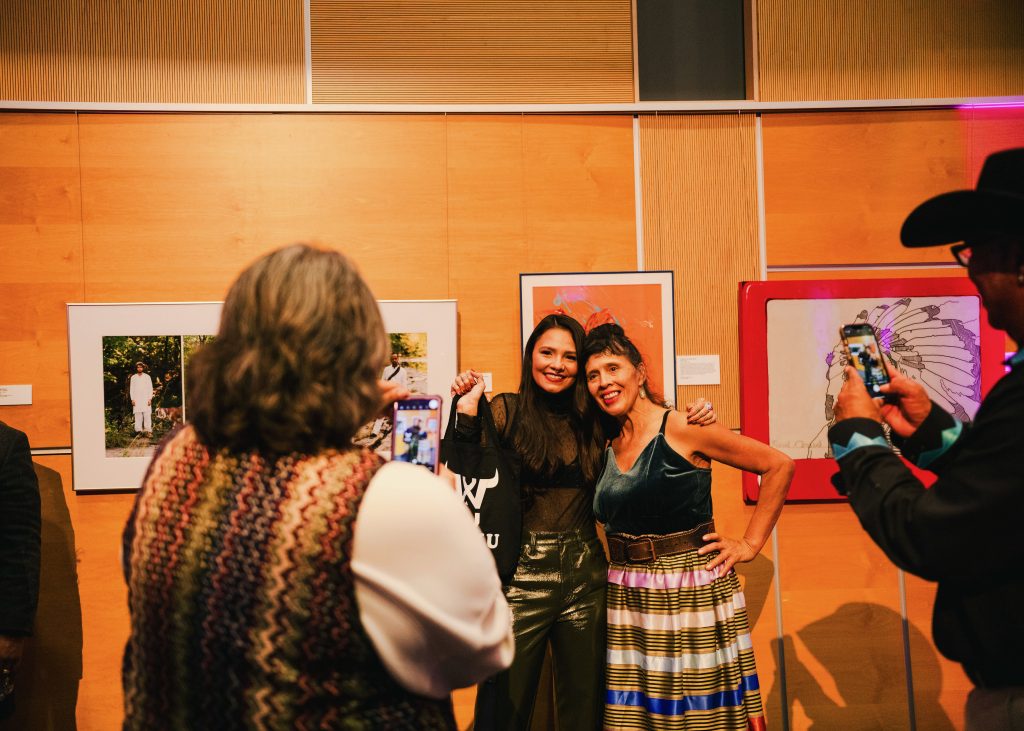
You’ve worked as a casting director as well as a producer and director. How does wearing multiple hats shape your storytelling process?
When I was a production assistant on Reservation Dog season one, I was also directing my first short documentary titled Restoring Néške’emāne. It was an environmental short documentary. As I look back on my career, I’ve always tried to be involved in larger projects while also creating and telling my own stories, because I knew that people always say, “If you want to direct, you have to direct.” It was really scary, and I had no idea what I was doing. But I knew it was something I wanted to do, and I was eager to try and learn how to direct a vision and a story. Whenever season two came around, the producers asked me to do the extras casting and be a casting director. And I had never done that before.
I had no idea what that meant or what it was going to take, but I said yes because I’d get to work with the directors. I was going to be able to work with the costume department, hair, and makeup, and all these talented creatives and department heads in this casting role. I’ve been fortunate enough to have cast seasons two and three of Reservation Dogs and Sterling Harjo’s next project, The Low Down, which is coming out in September on FX and Hulu. Wearing multiple hats has allowed me to learn everything on a film set and how these productions work, and I’m still learning. I believe this will make me a better director in the long run because understanding what I’m asking others to do will enable me to communicate more effectively with them, and I’ll be able to empathize with their challenges in making it happen.
There’s a lot of power and knowledge. Knowledge is power, but power in a way that I want to make film and film sets that are collaborative, supportive, good, and filled with good energy. The storytelling process is essential. To surround yourself with people that you love to collaborate with to help move along the storytelling process in a way that you want it to go, and to help inform that. I think it’s definitely a good thing for people to try different things in the industry, find what fits, and learn as many roles as possible.
For young Native creatives who wanna break into film or TV, what’s one piece of advice you always share?
I feel like I share a lot, and I just shared one thing, but one of the main things I say is that everyone in this industry has impostor syndrome at some point. I think everyone does in general, but I think that one of the most powerful things you can do for yourself is to just get out of your own way and make the thing that you wanna make, whether that’s writing it, directing it, producing it, putting yourself in those positions that you’re scared to do, forcing yourself to grow.
We get in our own way, and I’ve been there many times where I’m like, “Well, I could do it, or I could push, or I could push the project, or am I meant to do this?” Like, am I supposed to be doing this? But there are so many things that point to why I should be doing it. That comes back to your intuition. If your intuition is telling you that this is what you need to be doing, or at least that you want to try it, then just put your worries away. Don’t worry about making the best thing you’ve ever made; that is good advice I got recently, and just do it. You never know what you’ll learn. You might fail, but you’ll learn from it. You’ll never know what could come of it. Some of the best opportunities have come my way because of my projects and things that I’ve created myself with an incredible collaborative team.
What stories are you most excited to tell next, and what should audiences expect from you in the next year?
I’ve had experience directing short documentaries, but I’m shifting into narrative film now. Hopefully, this is one of those moments where I’m like, “get out of your way, Loren, just do it.” I might fail, and that’s okay. I’m excited for my journey and what will come of it, you know, me stepping into this new space of growth as an artist. I’ll still be making documentaries in some capacity. I’m also doing some short commercials for Manitobah, which is a mukluk and moccasin company. I’m sure that there’ll be plenty of fun stuff in the future.
You were named to the 2025 Forbes 30 Under 30 list. What does that kind of recognition mean to you, and how do you hope to use your platform to shift the industry?
That recognition was crazy. I woke up one morning to find an email saying I made the list, and I was totally in shock. I think this recognition for me is a testament to all of the work that is being done by my community and the industry at large, because I wouldn’t be able to have that recognition if it wasn’t for Reservation Dogs, Fancy Dance, Killers of the Flower Moon, and all these other people that have been working in the industry for so much longer than me and just providing me opportunities and setting the stage for my success. This recognition is not just about me and what I’ve done, but about what others have helped build.
That is very unique to Native people, who are on the Forbes list. I hope to use this platform to funnel more resources to Native creatives and opportunities that come my way that I am unable to take or that I think would be great fits for other people. I’m always sharing that with others, recommending people, and exploring how I can help and contribute, even if it’s not as the lead creator. I think that there’s so much room for collaboration for abundance in this industry, and I think that we need each other, we need to support each other in order to survive these chaotic times. It’s a scary place, but I am excited to see where it goes.
I’m excited to see what stories make it to the big screen because I believe there’s so much untold and unexplored by Native people. We’re still figuring out what Native cinema is. Whenever I think about that word, not one thing comes to mind, and I think that’s an exciting thing to think about. The world is our oyster.
As Loren Waters steps into her next chapter—shifting from documentary to narrative film—she carries with her the same values that have shaped her journey so far: cultural responsibility, storytelling with heart, and an unwavering commitment to her people. Recognition like Forbes’ 30 Under 30 is only the beginning. For Waters, success is not just about accolades but about opening doors, sharing resources, and building community. In her own words, Native cinema is still being defined, and she’s one of the visionaries helping shape that future.



